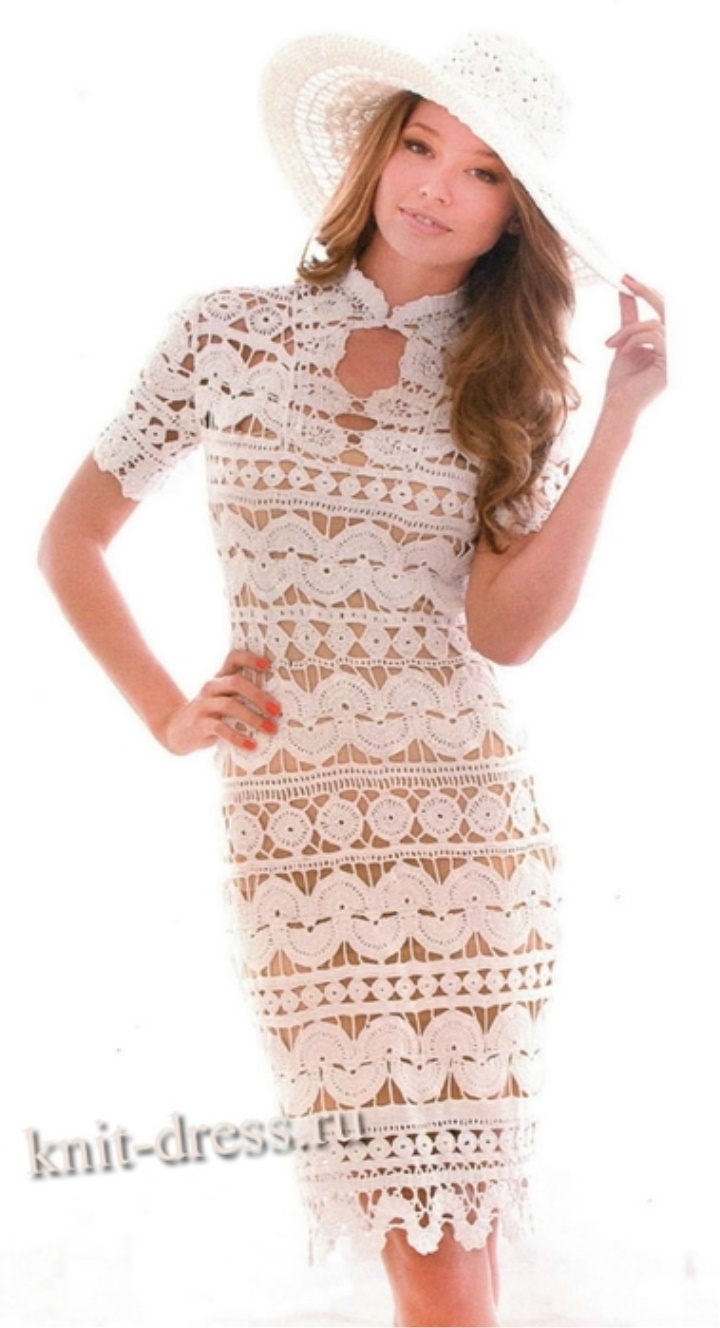
Dress white knitting:
First, make a pattern taking into account the individual features of the figure, then tie the patterns of circles and semicircles. Based on the pattern and patterns, calculate the number of motifs for lace strips.
Tie the motifs, collecting them in separate ribbons: 1) tape A - from small circles is performed without tearing off the thread; 2) tape B is assembled from large semicircles, which are knitted separately,
then joined in the process of tying. The alignment of the tape horizontally is carried out using chains from the VI and high bars, the length of which is corrected experimentally;
3) tape C from circles of medium diameter is collected during the knitting of the last row with the help of "pico". The alignment of the tape horizontally is carried out using chains from the VI and high bars, the length of which is corrected experimentally;
4) tape D from small circles, which are knitted separately and are connected together by means of "pico". Scheme 12 shows the methods of forming lace strips from individual motifs, variants of their binding and interconnection.
The sequence of connecting the bands of the original is carried out from the bottom up in the following rhythm: strip A, then B, again A, B, then C, B, D, B, A, B, C. You can follow this rhythm, or define your own. Strapping bands can also be played, making it more dense (RLS, CIH), or through (CIH + VP, C2H + VP, arches from the VP and RLS). Remember that in order to achieve a successful result it is necessary to apply the knitted fabric to the pattern as often as possible, introducing the necessary changes in the process of knitting.
Dress the bottom of the dress with the Bryug border (Scheme 12). Sew a dress along the shoulder line. Collect the lace sleeves, strictly following the pattern. Stick them into the armholes. Bottom sleeves and the neck of the dress are tied with festons in the brugge technique according to the scheme 12a. To form the collar of the rack, use straight bryug gauze. Sew the hooks as fasteners.